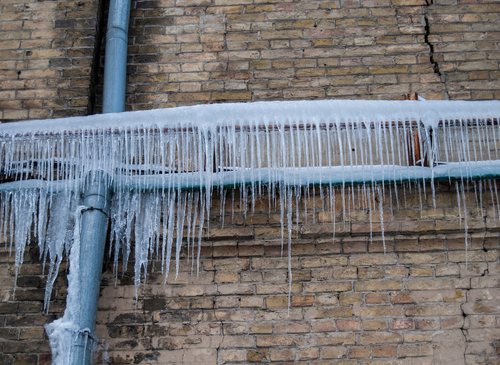Tips to Defend Pipes from Freezing: Expert Tips
Call TodayThis post further down in relation to How to Prevent Your Pipes From Freezing is immensely enjoyable. You should investigate it.

Cold weather can ruin your pipes, specifically by freezing pipes. Below's exactly how to prevent it from happening and what to do if it does.
Introduction
As temperatures decrease, the risk of frozen pipelines rises, possibly causing pricey repair work and water damage. Understanding just how to stop frozen pipelines is critical for home owners in cold climates.
Prevention Tips
Protecting at risk pipelines
Wrap pipes in insulation sleeves or utilize warmth tape to safeguard them from freezing temperatures. Focus on pipelines in unheated or outside areas of the home.
Heating techniques
Keep indoor areas appropriately warmed, particularly areas with plumbing. Open up cabinet doors to allow cozy air to distribute around pipelines under sinks.
Exactly how to identify frozen pipelines
Try to find lowered water flow from taps, uncommon odors or noises from pipes, and visible frost on revealed pipelines.
Long-Term Solutions
Architectural changes
Think about rerouting pipes away from exterior wall surfaces or unheated areas. Add additional insulation to attic rooms, cellars, and crawl spaces.
Upgrading insulation
Invest in top quality insulation for pipelines, attics, and walls. Proper insulation aids preserve consistent temperatures and lowers the threat of icy pipelines.
Securing Outside Plumbing
Yard hoses and exterior faucets
Separate and drain garden hoses before wintertime. Set up frost-proof faucets or cover outdoor faucets with shielded caps.
Recognizing Frozen Pipelines
What causes pipelines to freeze?
Pipes ice up when exposed to temperatures below 32 ° F (0 ° C) for expanded durations. As water inside the pipelines ices up, it increases, putting pressure on the pipeline walls and potentially causing them to burst.
Risks and problems
Icy pipes can result in water system disturbances, property damages, and pricey repairs. Burst pipelines can flood homes and cause substantial structural damage.
Indications of Frozen Pipeline
Determining icy pipelines early can stop them from bursting.
What to Do If Your Pipelines Freeze
Immediate activities to take
If you presume frozen pipelines, keep taps open to eliminate stress as the ice melts. Use a hairdryer or towels soaked in warm water to thaw pipelines gradually.
Final thought
Protecting against icy pipelines calls for proactive steps and fast actions. By comprehending the reasons, indicators, and preventive measures, homeowners can protect their plumbing throughout winter.
5 Ways to Prevent Frozen Pipes
Drain Outdoor Faucets and Disconnect Hoses
First, close the shut-off valve that controls the flow of water in the pipe to your outdoor faucet. Then, head outside to disconnect and drain your hose and open the outdoor faucet to allow the water to completely drain out of the line. Turn off the faucet when done. Finally, head back to the shut-off valve and drain the remaining water inside the pipe into a bucket or container. Additionally, if you have a home irrigation system, you should consider hiring an expert to clear the system of water each year.
Insulate Pipes
One of the best and most cost-effective methods for preventing frozen water pipes is to wrap your pipes with insulation. This is especially important for areas in your home that aren’t exposed to heat, such as an attic. We suggest using foam sleeves, which can typically be found at your local hardware store.
Keep Heat Running at 65
Your pipes are located inside your walls, and the temperature there is much colder than the rest of the house. To prevent your pipes from freezing, The Insurance Information Institute suggests that you keep your home heated to at least 65 degrees, even when traveling. You may want to invest in smart devices that can keep an eye on the temperature in your home while you’re away.
Leave Water Dripping
Moving water — even a small trickle — can prevent ice from forming inside your pipes. When freezing temps are imminent, start a drip of water from all faucets that serve exposed pipes. Leaving a few faucets running will also help relieve pressure inside the pipes and help prevent a rupture if the water inside freezes.
Open Cupboard Doors
Warm your kitchen and bathroom pipes by opening cupboards and vanities. You should also leave your interior doors ajar to help warm air circulate evenly throughout your home.

I was made aware of that article about 6 Ways to Prevent Frozen Pipes from a friend on another blog. Make sure you take the opportunity to promote this article if you appreciated it. I value reading our article about 6 Ways to Prevent Frozen Pipes.
Request Appointment